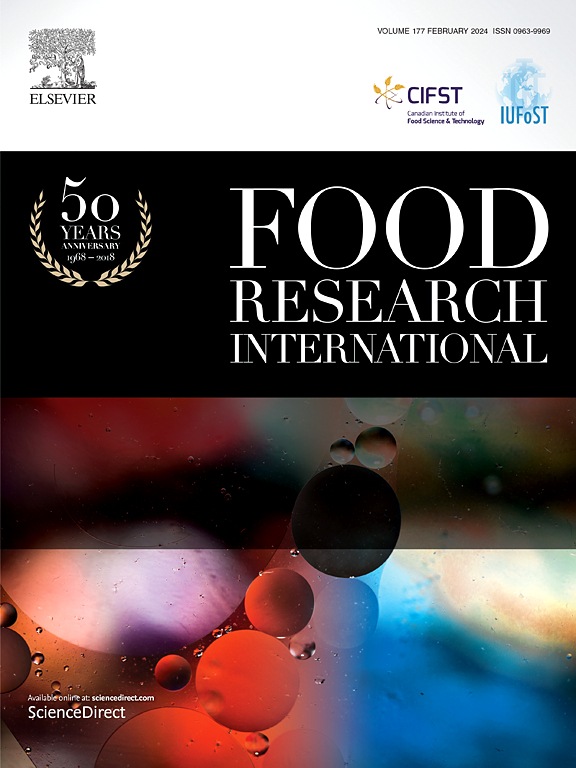From lab to table: Recent advances in the application of sodium alginate-based hydrogel beads in the food industry
IF 8
1区 农林科学
Q1 FOOD SCIENCE & TECHNOLOGY
引用次数: 0
Abstract
Due to their advantages in biocompatibility and biodegradability, sodium alginate-based hydrogel beads have been extensively studied as food-grade carrier materials. In recent years, their applications in intelligent encapsulation and delivery systems have attracted significant attention, particularly demonstrating synergistic enhancement potential when combined with functional components such as prebiotics and enzyme preparations. Sodium alginate-based hydrogel beads form a three-dimensional network structure through Ca2+-mediated ionic cross-linking, exhibiting biocompatibility, edibility, adjustable pore structures, and sustained-release properties. These characteristics endow them with broad application prospects in the food industry, such as serving as food additives, controlled-release agents, and nutrient carriers. Additionally, they show potential applications in food packaging and preservation. However, challenges remain in their industrial implementation, including stability during preparation, cost control, and large-scale production. This article provides a systematic review of the formation mechanism, preparation methods and modification strategies of sodium alginate-based hydrogel beads. It focuses on analyzing their application progress in the food industry, including functional food development, controlled-release system construction, and food texture modification. It is recommended that future research efforts place a priority on the optimisation of preparation methods and properties of sodium alginate-based hydrogel beads, with a view to meeting the industrial demands that are set to emerge in the future.

从实验室到餐桌:海藻酸钠基水凝胶珠在食品工业中的应用的最新进展
由于海藻酸钠基水凝胶珠具有生物相容性和可生物降解性的优点,作为食品级载体材料得到了广泛的研究。近年来,它们在智能封装和输送系统中的应用引起了极大的关注,特别是当与益生元和酶制剂等功能成分结合时,它们显示出协同增强的潜力。海藻酸钠基水凝胶珠通过Ca2+介导的离子交联形成三维网络结构,具有生物相容性、可食性、可调节孔结构和缓释特性。这些特性使其在食品工业中具有广阔的应用前景,如作为食品添加剂、控释剂、营养载体等。此外,它们在食品包装和保存方面也有潜在的应用。然而,在工业应用中仍然存在挑战,包括制备过程的稳定性、成本控制和大规模生产。本文系统地综述了海藻酸钠基水凝胶珠的形成机理、制备方法和改性策略。重点分析了它们在食品工业中的应用进展,包括功能食品开发、控释体系建设、食品质地改性等。建议未来的研究工作优先考虑海藻酸钠基水凝胶珠的制备方法和性能的优化,以满足未来即将出现的工业需求。
本文章由计算机程序翻译,如有差异,请以英文原文为准。
求助全文
约1分钟内获得全文
求助全文
来源期刊

Food Research International
工程技术-食品科技
CiteScore
12.50
自引率
7.40%
发文量
1183
审稿时长
79 days
期刊介绍:
Food Research International serves as a rapid dissemination platform for significant and impactful research in food science, technology, engineering, and nutrition. The journal focuses on publishing novel, high-quality, and high-impact review papers, original research papers, and letters to the editors across various disciplines in the science and technology of food. Additionally, it follows a policy of publishing special issues on topical and emergent subjects in food research or related areas. Selected, peer-reviewed papers from scientific meetings, workshops, and conferences on the science, technology, and engineering of foods are also featured in special issues.
 求助内容:
求助内容: 应助结果提醒方式:
应助结果提醒方式:


